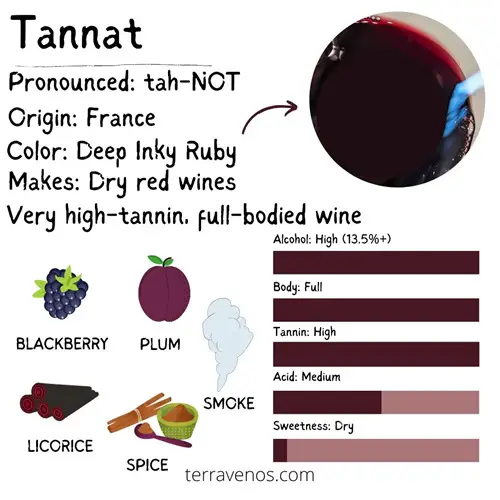
Where are the massive chunks of roasted mastodon spitting and popping over a firepit when you need them?
Tannat has thick, dark skins that craft deep red wines. These thick skins protect Tannat from fungal disease in the vineyard. Today, the largest producer of Tannat isn’t France, but rather Uruguay.
Tannat may be a lesser-known black grape from southwestern France, but its unique profile has helped this humble grape stumble through wine history thanks to the odd twist of fate and accidental discovery along the way.
Where Does Tannat Come From?
Originally from France, today Tannat grows in France, Uruguay, and parts of California.
Tannat in France
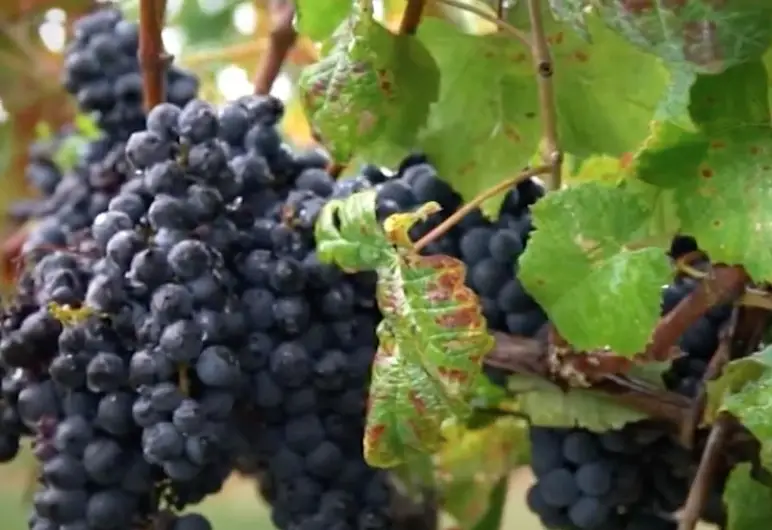
Tannat hails from southwestern France, in the Madiran AOC, where the grape flourished as a part of local Basque wine culture.
In France, they blend Tannat with Cabernet Sauvignon to soften the wine – let that sink in for a moment – along with Cabernet Franc, and Fer (another local black grape).
French Tannat expresses raspberry notes, tannic structure, and high alcohol.
Nerdy Side Note: Did you ever think about… The Basque have a yin and yang thing going on with their wines across the Pyrenees. On the Spanish side, you get Getariako Txakolina, a high acid, zippy white, while their French cousins enjoy Tannat, this extraordinarily tannic red wine. Huh.
Today, the largest producer of Tannat isn’t France, but rather Uruguay. Surprise, surprise.
How Did Tannat Get to Uruguay?
According to local lore, a ruler (who is sometimes identified as Louis XVI and at other times a local lord from the French commune Iroulégui) had prohibited the sale of Tannat.
This edict prevailed throughout the centuries until a foreman of a local estate stole 14 Tannat shoots from a vineyard and fled to Argentina at the beginning of the 19th century. This man was the brother – or possibly nephew – of Argentinian viticulturist Juan Jáuregui (I’ll dub him J.J.) who planted the vines in Entre Ríos, Argentina, a border town with Salto, Uruguay.
A plausible series of events, but unlikely.
The second version is slightly more credible.
The grandparents of J.J., friends of a viticulturist in the royal vineyards back in Bordeaux, obtained a few Tannat shoots that they then planted in Iroulégui. When J.J. was settled in Argentina, he asked his relatives to send some cuttings so that he could test them out in the region.
In the obligatory quirk of historical happenstance, an agricultural industrialist by the name of Pascual Harriague (Ha-ree-AH-gway) settled in Salto, Uruguay just across the border from J.J.
Being a good neighbor, J.J. gifted Harriague cuttings of Tannat.
Viticulture up through the 1870s wasn’t considered a viable enterprise in Uruguay, but Harriague propagated the vine with tremendous success, birthing Uruguay’s national wine industry.
The reality is that many European grape varieties had already found their way to Argentina and Uruguay by the late 1800s, including Tannat, thanks to expansive European immigration.
No one can say with any certainty how Tannat came to the region. And while Harriague didn’t introduce Tannat to the country, his viticultural enterprise pushed the cultivar into the spotlight. So much so that today the variety carries his name as a synonym: Harriague.
He even gets his own postage stamp and annual wine festival. Sweet.

Harriague’s legacy wasn’t to be the first, but to introduce Tannat across the land like a prophecy of liquid velvet.
Today, Tannat is considered the first – and primary – grape variety used for Uruguay’s industrial wine production.
Uruguayan Tannat gets blended with Pinot Noir and Merlot, producing wines with blackberry notes and softer tannins. (Learn how to taste tannins here.)
Check out more on Tannat’s history here – there’s a good story (external link).
How Did Tannat Get to the United States?
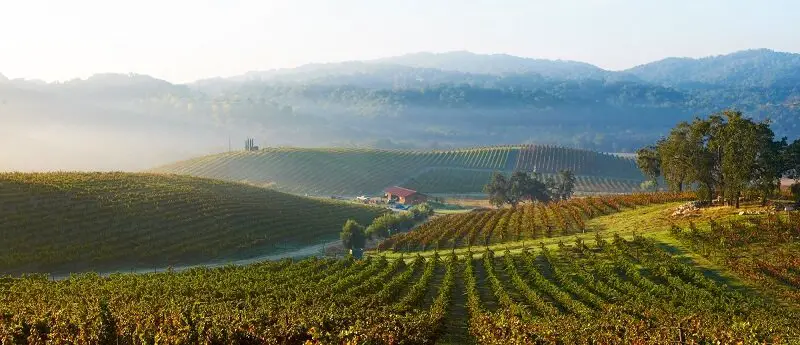
Tannat has been growing in California since the late 1890s with experimental vineyards under UC Berkeley. The vines were lost to time, probably due to bureaucratic paperwork (I’ve worked in higher ed, it’s an educated guess), and re-discovered in the 1960s.
But even then, no one considered Tannat a viable for commercial propagation. It was too tannic and not palatable as a table wine.
Fast forward to the mid-1990s.
Tablas Creek, a California producer renowned for its work on importing Rhône varieties into the US, received a mysterious cutting in an order of vine material from France. After a little digging, they discovered that a French nurseryman had added Tannat vines to their order.
He didn’t ask, he just did it. My kinda guy.
When pressed on why he had added Tannat to the shipment, the nurseryman’s response was that the variety should do very well in the Paso Robles region.
Another twist of fate for Tannat.
Tablas Creek multiplied its Tannat cuttings by planting 0.5 acres of experimental vines in 1996.
Fun Wine Fact: Keep in mind that it takes 3+ years to establish a vineyard and produce a crop and at least one more year to make wine. And that’s fast-tracking. So from start to finished bottle, winemaking is a 4-year process.
The wines delivered on Tannat’s profile: strong structure, good acid, dark fruits.
Tannat in California

Today, California’s Tannat plantings are minuscule.
Itty bitty.
In 2005, a decade after Tablas Creek had established its half-acre of Tannat, there were only 140 acres (57 ha) under vine. And in 2019 the state still had a total of only 633 acres of Tannat (256 ha). Cabernet Sauvignon, by comparison, boasts a whopping 94,854 acres under vine.
Most of the California Tannat plantings come from the Tablas Creek vineyard. And in 2002, the producer petitioned the Bureau of Alcohol, Tobacco, and Firearms to allow Tannat to be varietally labeled on a bottle of wine, which the agency approved.
Thank you, Tablas Creek.
Regulation Alert: Any bottle with a varietal label name (e.g., Merlot) must contain at least 75% of that varietal. So in the US a bottle with ‘Tannat’ will be made of a minimum of 75% Tannat. Producers don’t need to disclose what the other 25% of the wine is, though many do.
How Tannat Has Changed Winemaking
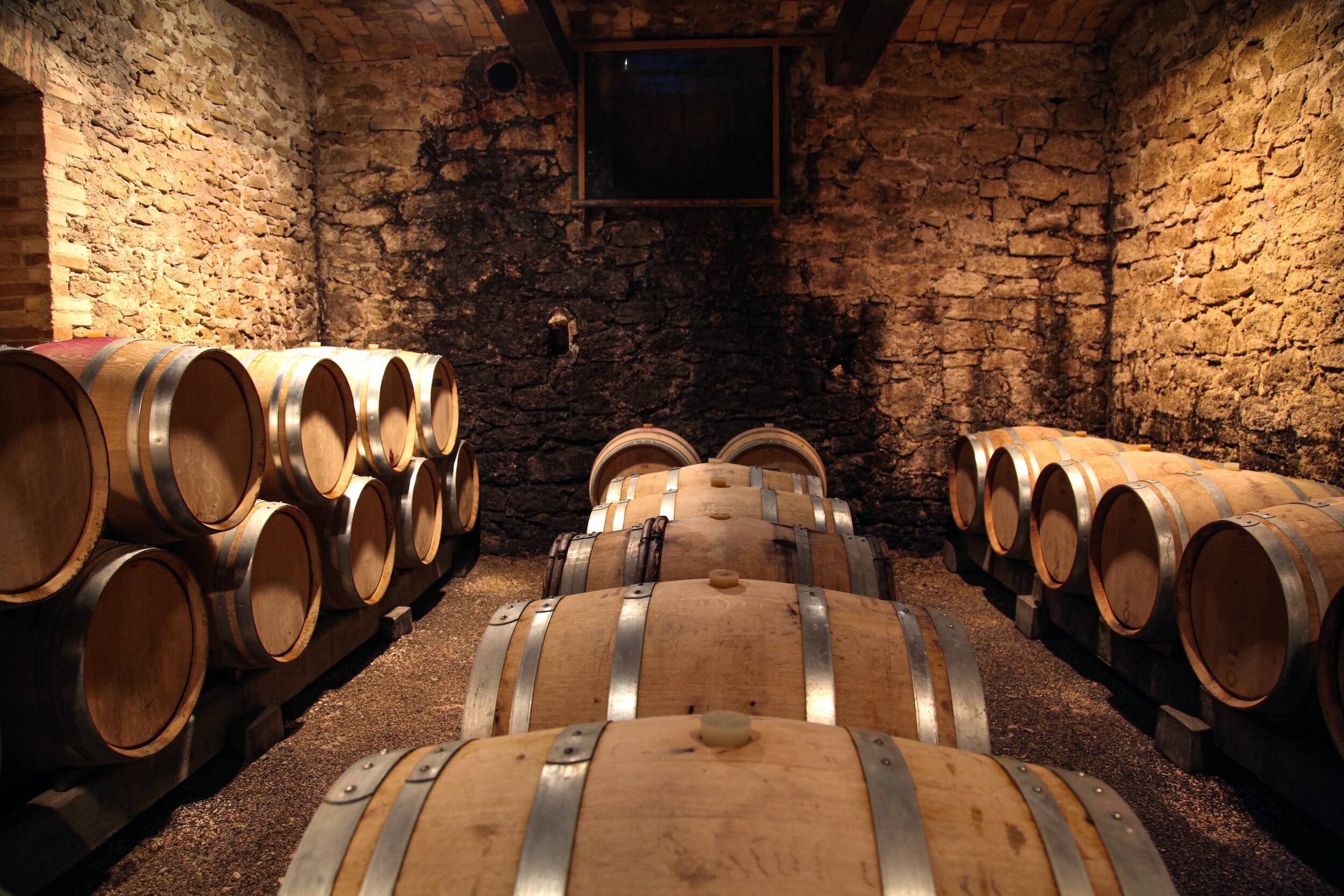
Tannat isn’t an easy-drinking wine thanks to its heavy tannin structure.
Winemakers work the grapes gently to lessen tannin extraction from seeds and skins.
They want to maximize structure and minimize astringency.
Tannin isn’t a that needs to go through multiple press fractions (i.e., successive iterations of pressing the skins to make sure they’ve extracted every last drop of wine). But even with careful winemaking, Tannat often needs aging thanks to its puckering potency.
And extended aging means producers have capital tied up in inventory for years.
Not the most brilliant of business models.
Enter innovation.
French winemaker Patrick Ducournau had an epiphany while working with Tannat.
Ducournau knew that barrel aging softened harsh wines and that maybe, just maybe, he could artificially synthesize the effects of barrel aging and speed up the maturation process.
How Do Barrels Help Wines Mature?
A barrel allows for gentle oxygen exposure over time. This promotes tannin polymerization, a process where those pucker-producing tannin molecules bind together into larger and larger chains. Eventually, the chains get so big that they precipitate out of the wine or cannot bind with your saliva molecules – either way, the tannins soften, transforming the wine from bratty brick to luscious velvet. Here’s more on wine barrels.
In 1990, Ducournau played with his idea, adding small amounts of oxygen into a fermenting batch of Tannat through an oxygen bubbler. Picture your average home fish tank with a bubbler.
Exact same idea.
This novel twist on controlled exposure to small amounts of oxygen accelerated Tannat’s maturation, making it ready for market much sooner.
Ducournau had invented micro-oxygenation, today known as ‘MO’ or ‘Mox’.
Enologists continue to experiment with dosages and timing for micro-oxygenation, and some claim that they can replicate the effects of the finest barrel aged wines.
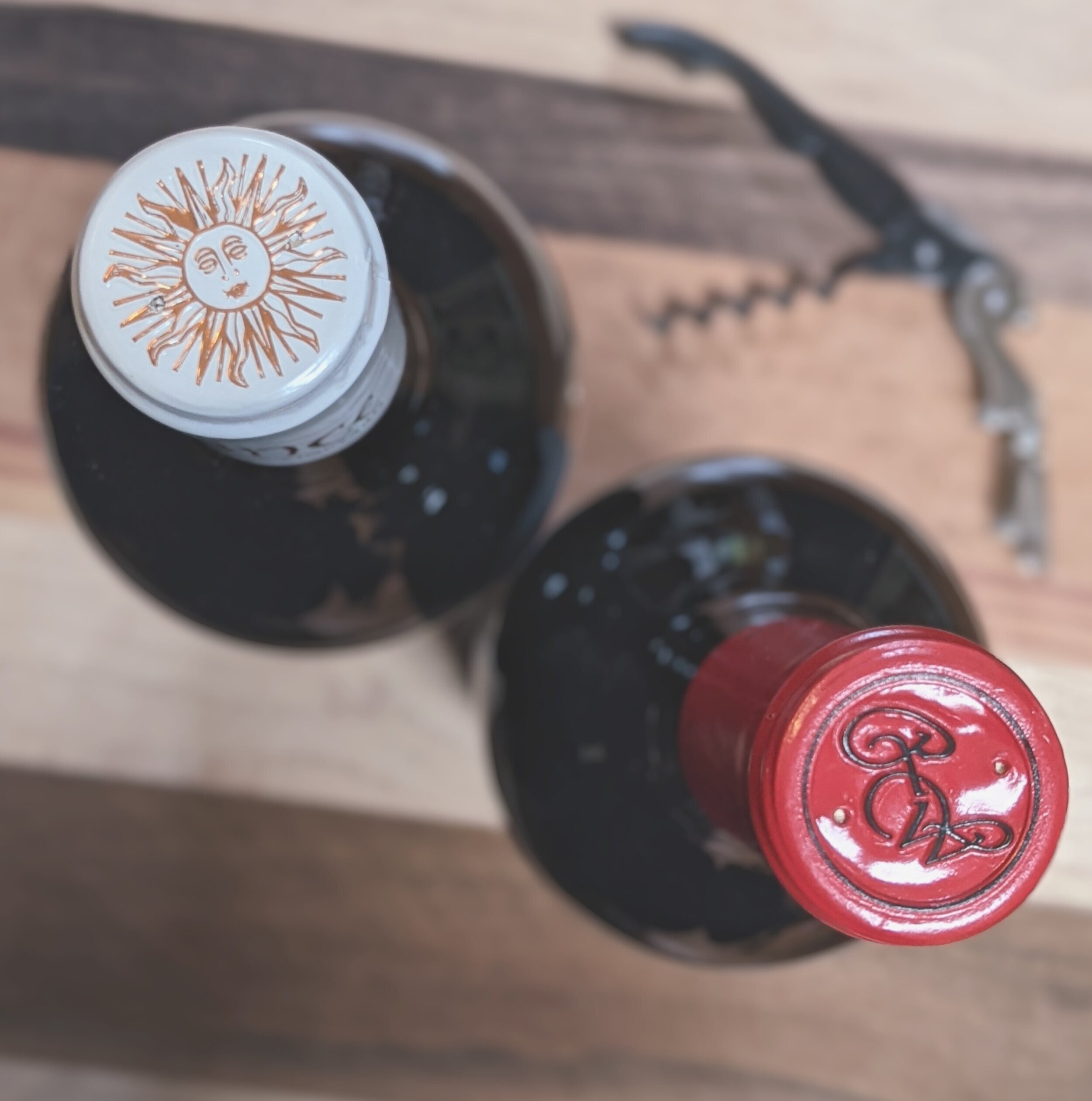
What Foods Go with Tannat Wine?

Break out the BBQ! Tannat was made for grilled foods, cutting through fat and grease. But also experiment with strong aged cheeses and bitter chocolates.
Pair Tannat wine with:
- Sweet BBQ ribs
- Smoked beef brisket
- Mastadon 🐘
- Ragu pastas
- BBQ chicken pizza
- Honey BBQ chicken wings
- Lentil soup
- Minestrone soup
- Gruyere, Manchego, Gouda cheeses
Will I Like Tannat Wine?
If you enjoy Cabernet Sauvignon, then you will enjoy Tannat. Those who grew up refining their palates on soft drinks will find Tannat a disagreeable dinner companion. Take a hard pass.
However, if you’re someone who has an affinity for astringent foods – dandelion greens, strong black teas, or unsweetened cocoa – you’ll find Tannat’s structure a curiosity worthy of a second sip. And probably a third.
Helpful Tip: Check out this helpful post to learn about the difference between bitterness and astringency in your wine.
Tannat vs Tempranillo Wines
| Characteristics | Tannat | Tempranillo |
|---|---|---|
| Hue | Deep purple to black | Deep ruby red |
| Color | Red | Red |
| Aromas | Blackberry, plum, dark chocolate, tobacco | Red cherry, leather, vanilla, tobacco |
| Tannins | High | Medium to high |
| Acid | Medium to high | Medium |
| Alcohol (%) | 13-15% | 13-14% |
| Body | Full | Medium to full |
| Intensity | Pronounced | Moderate to pronounced |
| Key Growing Regions | Uruguay, France (Madiran), Argentina | Spain (Rioja), Portugal (Douro), Argentina |
| Classic Pairings | Grilled meats, game, hearty stews | Roast lamb, grilled steak, paella |
| Price Range | $15-$40 | $10-$50 |
Tannat and Tempranillo may sound the same, but these are two very different wines. Tannat will be deeper colored (you shouldn’t be able to see through the glass), and have more body, acid, and tannin than Tempranillo wines.
Tempranillo, Spain’s signature red wine, will express red fruit notes with vanilla and leather – noticeably more red fruit than Tannat.
Helpful Tip: Go check out more on Tempranillo here.
Tannat Producers to Try
You’ll need to shop around to find Tannat wines. They aren’t mainstream like Cabernet Sauvignon or Pinot Noir, so if you find a bottle go ahead and give it a try.
Here are a few producers you can seek out:
- Bodega Garzón – Garzón, Uruguay
- Pueblo del Sol – Canelones, Uruguay
- Bodega Bouza – Montevideo, Uruguay
- Château Bouscassé – Madiran, France
Check out this delightful video on the wines from Bodega Bouza:

Final Thoughts – Tannat Is a Big Wine
If you love strong red wines, then you need to try Tannat. You’ll need to go to a specialty wine shop, but it’s well worth your time and effort to give Tannat wines a try. Remember:
- Tannat is a big red wine. You’ll want to pair Tannat with hearty cuisine.
- Look for Tannat wines from Uruguay or under the label “Madiran” from France.
- Tannat has helped shape innovation in winemaking and our understanding of the interplay between tannin and oxygenation.
Thirsty for More?
Check out this list of other strong red wines if you like big and bold.
Here’s a 30-second tasting tip on how to taste tannins. Easy. Must-try experiment.
Head over to this Malbec wine guide to learn about South America’s other signature red wine.



